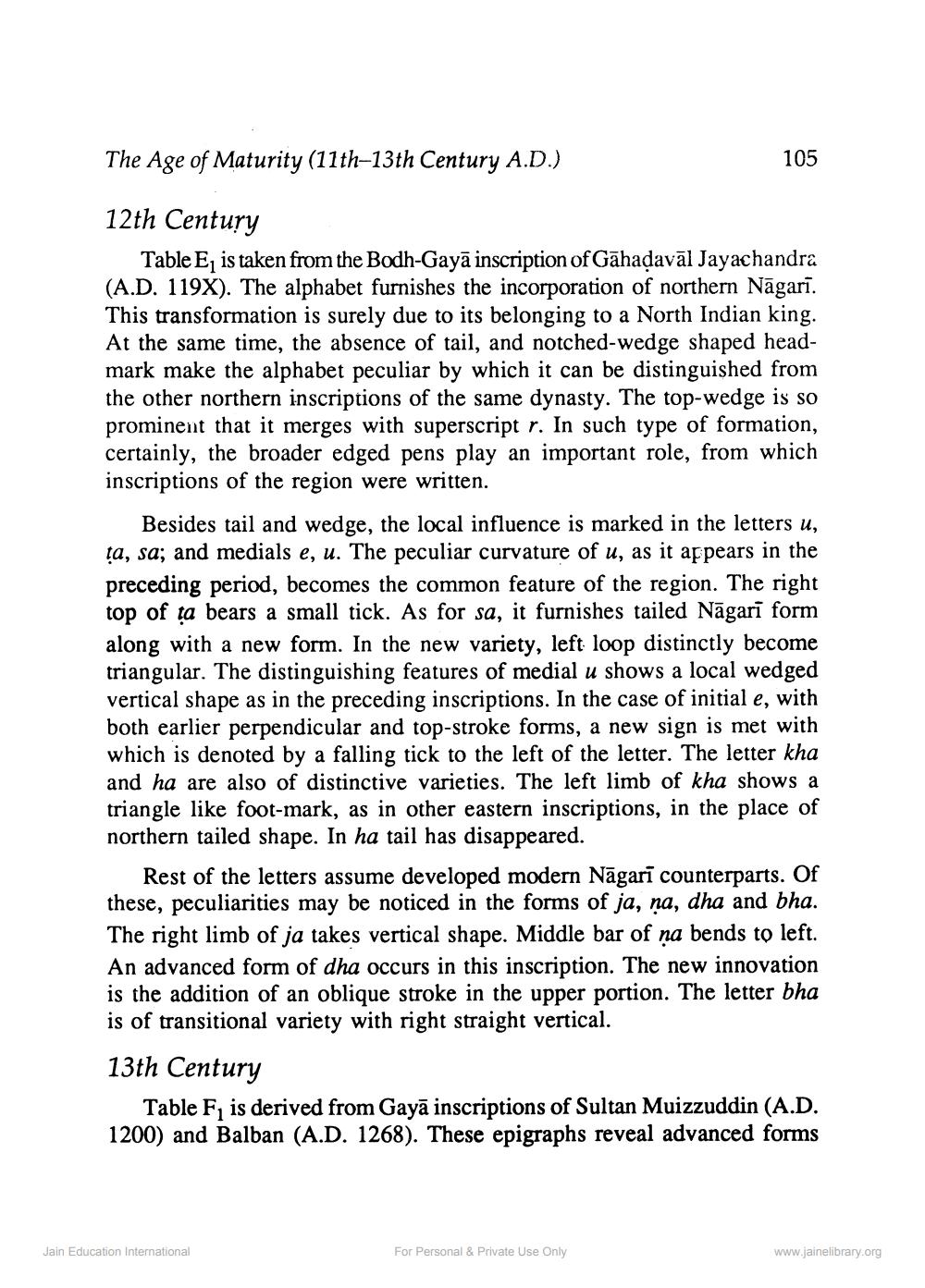________________
The Age of Maturity (11th-13th Century A.D.)
105
12th Century
Table E, is taken from the Bodh-Gayā inscription of Gāhadavāl Jayachandra (A.D. 119x). The alphabet furnishes the incorporation of northern Nāgarī. This transformation is surely due to its belonging to a North Indian king. At the same time, the absence of tail, and notched-wedge shaped headmark make the alphabet peculiar by which it can be distinguished from the other northern inscriptions of the same dynasty. The top-wedge is so prominent that it merges with superscript r. In such type of formation, certainly, the broader edged pens play an important role, from which inscriptions of the region were written.
Besides tail and wedge, the local influence is marked in the letters u, ta, sa; and medials e, u. The peculiar curvature of u, as it appears in the preceding period, becomes the common feature of the region. The right top of ta bears a small tick. As for sa, it furnishes tailed Nāgarī form along with a new form. In the new variety, left loop distinctly become triangular. The distinguishing features of medial u shows a local wedged vertical shape as in the preceding inscriptions. In the case of initial e, with both earlier perpendicular and top-stroke forms, a new sign is met with which is denoted by a falling tick to the left of the letter. The letter kha and ha are also of distinctive varieties. The left limb of kha shows a triangle like foot-mark, as in other eastern inscriptions, in the place of northern tailed shape. In ha tail has disappeared.
Rest of the letters assume developed modern Nāgarī counterparts. Of these, peculiarities may be noticed in the forms of ja, na, dha and bha. The right limb of ja takes vertical shape. Middle bar of na bends to left. An advanced form of dha occurs in this inscription. The new innovation is the addition of an oblique stroke in the upper portion. The letter bha is of transitional variety with right straight vertical.
13th Century
Table F, is derived from Gayā inscriptions of Sultan Muizzuddin (A.D. 1200) and Balban (A.D. 1268). These epigraphs reveal advanced forms
Jain Education International
For Personal & Private Use Only
www.jainelibrary.org




